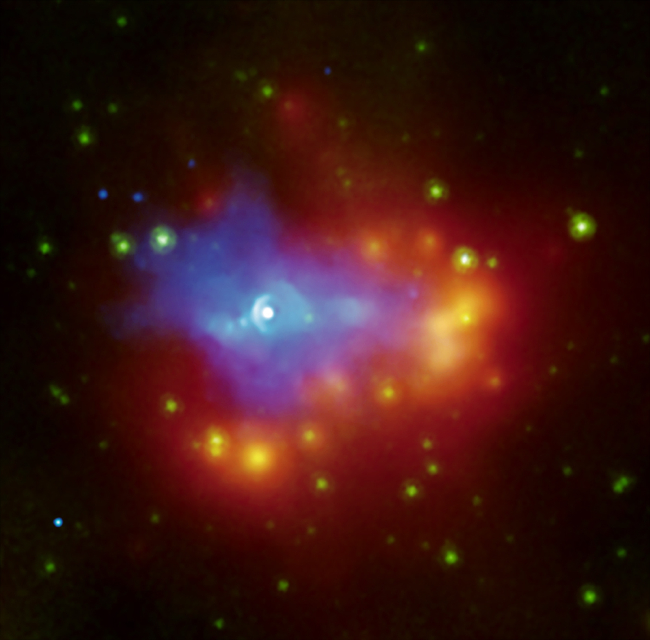
 Credit: X-ray: NASA/CXC/SAO/T.Temim et al.; IR: NASA/JPL-Caltech
Credit: X-ray: NASA/CXC/SAO/T.Temim et al.; IR: NASA/JPL-Caltech
Dust and the Wind
Massive stars run out of nuclear fuel and die explosively. Their death both destroys and enriches their environment. Destroys, as the supernova explosion rips apart the surrounding interstellar medium; enriches, as the ejecta produced carries forth new complex material into the pristine cosmos. A case in point is G54.1+0.3, the remnant left behind after the explosion of a star some dozen times the sun's mass. The image above is a composite X-ray and infrared image (taken by the Chandra X-ray Observatory and the Spitzer Space Telescope, respectively) showing the complexities of stardeath. The X-ray emission, in blue and white, shows high-energy emission produced by an outflowing wind energized by the dead compact stellar core of the exploded star (which appears as a white point source in the image). The Spitzer infrared image in red and yellow shows emission from dust in the ejecta. This stuff probably condensed out of the ejecta produced by the supernova. Surrounding G54.1+0.2 is a ring of young stars, whose formation may have been triggered by the massive progenitor of G54.1+0.3.
Published: April 12, 2010
<
HEA Dictionary ● Archive
● Search HEAPOW
● Other Languages
● HEAPOW on Facebook
● Download all Images
● Education ● HEAD
>

Each week the HEASARC
brings you new, exciting and beautiful images from X-ray and Gamma ray
astronomy. Check back each week and be sure to check out the HEAPOW archive!
Page Author: Dr. Michael F. Corcoran
Last modified Monday, 26-Feb-2024 17:21:19 EST


